|
|
|||||||||||
|
|
|||||||||||
 |
|||||||||||
|
|
|||||||||||
|
![]()
| Interview with Mr. Feng Zhiqiang, Chen Style Taijiquan expert from Beijing |
|
by Jarek Szymanski Photos - Jarek Szymanski and courtesy of Mr. Feng Zhiqiang; © J.Szymanski 2000-2003 |
|
Brief Biography of Mr. Feng Zhiqiang |
|
based on the article "Opening the river of Hunyuan, establishing the manners in
martial arts" written by Pan Houcheng and published in "Hunyuan Taiji"
magazine, 1/1999.
|
|
MR.FENG ZHIQIANG |
Mr.Feng Zhiqiang was born in 1928. His family was from Shulu County, Hebei Province. His great-grandfather was famous martial artist who passed military examinations and became Wuju (successful candidate in the imperial examinations on provincial level) during Qing Dynasty (1644-1911). Although Feng's father did not practice martial arts, one of family relatives, Wang Yunkai, was proficient in Shaolin boxing and when Feng became 8 years old, Wang started to teach him Tong Zi Gong (stretching exercises), Standing Post methods, Boddhidharma's Yijinjing (Classic of Changing the Tendons, set of isometric exercises). Feng not only learnt very fast, but inherited his great-grandfather's strength, and at the age of 12 was able to carry 200kg heavy stone around the courtyard (this is traditionally called "Strength Kills Four Gates" - Li Sha Si Men). He liked to fight and many times taught bad youngsters in the neighbourhood a lesson. Because Feng, with his big eyes, looked like a tiger, he was often called "Tiger with Big Eyes" (Da Yan Hu). |
|
|
|
At the age of 12 Feng was sent to relatives in Beiping (today's Beijing) to learn repairing electric appliances. One of his neighbours there was a Tongbei expert (also skillful in point striking and "Light Skill" - Qinggong) from famous Cangzhou County in Hebei Province, Han Xiaofeng. Feng studied under Han's guidance for four years, not only learning Tongbeiquan, but also Red Sand Palm skill (hands hardening method), kicking wooden posts and striking sand bags. Feng was able to break five bricks with one hand strike. At the end of 40s there were two martial artists very famous in Beijing - Xinyiquan (Xingyiquan) master Hu Yaozhen from Shanxi Province, called "One Finger Shakes Heaven and Earth" (Dan Zhi Zhen Qiankun), expert not only in martial arts, but also traditional Chinese medicine and Taoist meditation methods; the second was Chen Fake, 17th generation inheritor of Chen style Taijiquan. At the age of 20 Feng Zhiqiang through introduction of one of his gongfu brothers (who was from the same town as Hu Yaozhen) met Hu Yaozhen. Hu criticized Feng's practice methods saying they were "ruining his body". To make Feng understand better what he was talking about, Hu asked Feng to hit him. In spite of using whole strength Feng was easily defeated by Hu who only used one finger against him. As the result Feng knelt in front of Hu Yaozhen and started his Neijia boxing studies. Feng studied Liuhe Xinyi Quan under Hu's guidance for two years first learning Qi gathering methods, nourishing Qi, practising Intention and Qi, Santi standing, Dantian Methods, Wuxingquan (Five Elements Fists), Twelve Shapes, 24 Hands.
|
(1879-1973) native of Yuci in Shanxi Province; famous martial artist, expert in Qigong and traditional Chinese medicine (TCM). Graduated from Shanxi Chuanzhi Medical School; learnt from many masters of martial arts (internal styles of Taiji, Bagua and Xingyi), Buddhist and Taoist meditation, TCM; received secret transmission of Buddhist and Taoist meditation, and on the basis of his experience in medicine and internal martial arts methods created "Hu Yaozhen's Still and Moving Qigong"; in 1942 in Taiyuan set up Martial Arts Academy of Shanxi Province and became its president. Wrote several books: "Qigong and Health Preserving", "Qigong", "Hua Tuo's Five Animals Play", etc. According to Mr.Feng Zhiqiang, Hu Yaozhen studied Xingyiquan from Wang Fuyuan (Liu Qilan's disciple) and his disciple Peng Tingjuan, which classifies Hu's style as Hebei Xingyiquan. |
|
|
|
Hu Yaozhen (1879-1973) |
|
It is important to note that the practitioners in the lineage of Wang Fuyuan, who live in Yuci in Shanxi, call their art Xinyiquan (Mind and Intention Boxing), although in other areas it is generally known as Xingyiquan (Form and Intention Boxing) and should not be confused with original Xinyi styles of Dai Family or Henan Moslem branch. (JS) After two years of diligent studies under Hu Yaozhen's guidance, Feng Zhiqiang's internal skills reached high level - not only his Large Heavenly Circle and Three Dantians were opened, but also there was a small ball of Qi that could circulate freely along his body at his will, Five Bows were developed so that his body was full of elastic power. Hu Yaozhen realised that his disciple had not only inborn talent for martial arts, but was also a person who could in the future synthesize and bring to highest development arts he learnt and establish his own style. Hu decided that Feng should also study other martial arts and not be limited to only one style. For this reason he introduced Feng to his good friend, Chen style Taijiquan expert, Chen Fake. Hu suggested that Feng learnt from Chen while at the same time continuing his studies of Xinyi Internal Methods. Since that moment Feng was practising even harder than before, getting up at 4 in the morning and practising until 11 for seven hours. He was exercising both Xinyi and Taiji, Internal and External Methods, standing and moving techniques, single techniques and routines as well as pushing hands. During eight years from 1950 till 1957, Chen Fake corrected Feng's routine eight times, so that Feng was able to understand its inner meanings and true practice methods.
|
|
|
Chen Fake (1887-1957) |
(1887-1957), seventeenth generation descendant of Chen clan, famous Chen Style Taijiquan master, Chen Changxing's great-grandson. Chen became famous in his hometown for victories in leitai (free fighting) competitions held in the county and for defeating opponents armed with spear and saber while Chen stood barehanded (after he rejected the post offered to him by Han Fuju, local warlord). In 1929, through Chen Zhaopei's recommendation, Chen Fake left Chenjiagou and went to Beiping (today's Beijing) to teach Taijiquan. Very modest, used to say about himself "No Good" and for this reason became known in Beijing as "Chen No Good" (Chen Bu Zhong). Many times challenged by martial arts practitioners (including Bagua and Chinese wrestling experts), defeated them in great style, without hurting anybody. Emphasized Wude (Martial Virtue) in his teachings In his late he created New Frame (Xin Jia) of Chen Style Taijiquan, modifying the Old Frame (Lao Jia) by adding several movements and expressing Silk Reeling Power (Chan Si Jin) in more obvious manner. |
|
|
|
|
Chen had many students, including Lei Muni, Tian Xiuchen, Feng Zhiqiang, Hong Junsheng, Li Jingwu, Shen Jiazhen, Gu Liuxin. Shen Jiazhen and Gu Liuxin wrote a book called "Chen style Taijiquan", which was published in 1963. The drawings and explanations for the first and second routines of Chen style are based on Chen Fake's and his son, Chen Zhaokui's photos and introduce movements as taught by Chen Fake in his late years. Note: this book is a part of "The Complete Book of Taijiquan" (T029B) which is available through this site (Click here!) To read more about Chen Fake and saw historical photos of him demonstrating Chen Style Taijiquan click here. |
|
|
In 1953 Capital Martial Arts Research Society was established with Chen Fake as its president and Hu Yaozhen as vice-president. Feng Zhiqiang was going there everyday, first helping his teachers with everyday chores, and then asking for guidance and teachings. In this way he became Chen Zhaokui's (Chen Fake's son) practice partner. Most of Chen Fake's disciples were afraid to practice pushing hands with Chen Fake because of pain, but Feng Zhiqiang treated this as the best way to learn true skill. Since Feng's gongfu brothers always let Feng "enjoy" this "pleasure", at Chen Fake's late years it was usually Feng Zhiqiang who dealt with strangers coming to cross hands. In his letter to Wan Wende of Shanghai, Chen Zhaokui wrote: "I have one older gongfu brother, his name is Feng Zhiqiang, he's extremely intelligent, and his skill is the best among all our gongfu brothers". At the age of thirty Feng was already very proficient in both arts of Xinyi and Taiji and became very famous in Beijing martial arts circles. After Chen Fake passed away in 1957, Feng Zhiqiang, although busy with his work in electric appliances factory, was keeping in touch with his gongfu brothers and made few simple rules to be observed by those teaching martial arts: "first, do not make trouble; second, do not fight; third, if somebody comes to challenge you, I (e.g. Feng Zhiqiang) will deal with him". It happened many times that either Feng or one of his gongfu brothers was challenged and Feng had to deal with the challenger. Once a Qigong master wanted to compare his skill of Bigu (fasting) with Feng. The rule was to sit in meditation for three days with some water as the only food. After three days Feng as usually went out to practise with his 19kg steel rod, while Qigong master could hardly walk! Feng was in very good relations with Chen Fake's son, Chen Zhaokui. Before death Chen Fake asked Feng to take care of Chen Zhaokui. Feng was often practising together with Chen Zhaokui, taking care and protecting him. When Zhaokui passed away in 1981 at the age of 53, Feng was very sad and was often saying that he did not take good care of his gongfu brother. |
|
Chenjiagou is the place where Chen style Taijiquan comes from. Every generation of the clan had its masters, and in the 17th generation the most skilfull was Chen Fake. However, since after his arrival to Beijing Chen Fake was living in the capital, Beijing became the center of Chen style Taijiquan. After the Cultural Revolution (1966-1976) was over, Zhang Weizhen, Communist Party secretary of Chenjiagou, wrote a letter to Feng Zhiqiang asking him to come to Chenjiagou to teach Taijiquan. Feng Zhiqiang visited Chenjiagou three times, teaching Taijiquan to the 19th generation descendants of the style. Many Taijiquan practitioners of Chen clan from Chenjiagou were also often coming to Beijing to deepen their studies with Feng. This part of the history of Chen style Taijiquan will always be recorded in the chronicles. |
Feng Zhiqiang in Chenjiagou in 1979 |
|
|
|
|
Sitting (from left): Feng Zhiqiang (2nd), Chen Liqing (3rd; Chen style Small Frame expert); "Four Tigers" are standing (from the right): Chen Xiaowang (2nd), Zhu Tiancai (3rd), Wang Xi'an (5th), Chen Zhenglei (7th) |
|
In 1981 Feng Zhiqiang was asked by one of his friends from Beijing PE Institute to meet a foreign martial arts expert. The foreigner, skillful in many Chinese and foreign combat arts, came to China to look for martial arts masters, and although BPEI introduced him to many experts, he was still not satisfied and asked for meeting with Feng Zhiqiang. Feng asked the foreigner to demonstrate his martial art and found out that although the man's upper part of the body was very strong, the lower one was without roots. Feng asked the foreigner to hit him, and using "scaring the up to get the bottom" method (also called "drawing into emptiness") pushed the opponent flying on the wall. Since the foreigner could not understand what happened and found out that he was not hurt, he asked to try again and was defeated again. Afterwards the foreigner was full of respect towards Feng's skill and took up Taijiquan study. In 1981 Feng Zhiqiang retired and in 1983 became the president of the Beijing Chen style Taijiquan Research Association established the same year. Since 1981 Feng Zhiqiang has been invited to take part in many competitions in China, and in 1984 for the first time went abroad, to Japan, to teach Chen style Taijiquan. Later Feng also visited Mexico, USA, Singapore, Denmark, Holland, France and Hongkong. The country Feng visits most often is Japan. Among his student there are not only Taiji practitioners, but also Karate, Judo and Aikido experts. He has been challenged there many times by local martial artists and gained great respect. Same situation happened in 1986 in the US and in 1988 in Singapore. Feng Zhiqiang has many times been invited to move abroad to stay and teach Taijiquan, but he always refuses saying: "My roots are in China". He has also authored many books and video tapes/CDs on Chen style Taijiquan, like "Practical Fighting of Taijiquan", "The Essence of Chen Style Taijiquan", "Hunyuan Method of Taijiquan", "Silk Reeling Method of Chen Style Taijiquan", "Twenty Four Elbows of Chen Style Taiji", "Chen Style Taiji Grappling Methods", "Chen Style Xinyi Hunyuan Taijiquan" and many others. Feng Zhiqiang often says: "It is my greatest wish is to let Taijiquan culture from China better benefit the mankind!". |
|
In the first days of March this year I visited Mr.Feng Zhiqiang at his home in Beijing. Because of annoying traffic jams I came to a place near his home quite late and we did not have much time for the conversation. Since he and his family were afraid that I would not find the place, Mr.Feng's daughter came out to meet me and then Mr.Feng also came out to greet me and we all went to his apartment. Mr.Feng was very friendly, full of energy, often joking (he complained about being too short because "it was so easy for a tall person to fetch things that are put on a high shelf..."), open during the conversation. He answered all the question I was asking and it is a real pity the time was so short... The questions for this interview were sent by persons who subscribed to the updates notifications of this site as well as by some members of Internet discussion lists. Jarek Szymanski: Mr.Feng, it is known that you studied Shaolin Standing Post methods in your youth. How would you compare it to Neijia practice? |
|
|
MR.FENG ZHIQIANG: Yes, I learnt and practised Standing Post exercises of
Shaolin school. The main difference between them and the methods of Neijia
school is that Neijia emphasizes relaxation to greater degree. For this I
think there is certain reason in dividing martial arts into External and Internal
Families. It is also related to the methods of using Qi - External Family (Waijia)
uses physical strength (Li) to drive Qi, while Internal Family (Neijia) uses
Intention (Yi) to move Qi. Anyway, I had to give up all my external
practise after I started practising Neijia. JS: What is Qi? MR.FENG: Qi is a kind of driving force (Dong Li). For example blood circulation can be explained with the term "Qi". Internal styles say: "exercise Intention (Yi), not Qi", "when you use Intention, your channels will not be blocked", "exercise Qi, not physical strength (Li); when you exercise physical strength, it will easily break"; "Intention should be focused on Spirit (Shen), not Qi; when it is focused on Qi, then Qi will become stagnant". There is also another saying "Where Intention arrives, Qi also arrives". However one has to build Qi to reach this level. Qi comes from food, from breathing, it is also given to us by our parents and stored in the body as "Original Qi" (Yuan Qi). |
|
Feng Zhiqiang performing one of his Neigong (internal) exercises |
|
JS: You are well known as Chen style Taijiquan expert, but you also learnt Liuhe Xinyiquan. Could you tell more about your studies of this style? MR.FENG: My Xinyiquan teacher, Hu Yaozhen, was from Yuci in Shanxi Province. His style was of Wang Fuyuan's and Peng Tingjuan's lineage. I was studying under Hu's guidance for nine years. Hu Yaozhen put great emphasis on standing post exercises (Zhan Zhuang). I learnt many standing methods from him, not only San Ti Shi, but also Embrasing Post (Bao Zhuang), Closing Post (He Zhuang), Even Post (Ping Zhuang) and others. Each method had to be practised for three years, and while outside form did not really change, the Intention was changing. The teacher was teaching different Intentions to different students, it was very individual, and the Intentions were changing with the level of the practitioner. JS: Was it then something similar to Yi Quan (Intention Boxing)? MR.FENG: I do not know enough about Yi Quan to be able to compare the methods. Hu Yaozhen did not teach standing methods where palms were turned outwards because in his opinion this made Qi flow away. JS: Is Qi related to Dantian? |
|
MR.FENG: Dantian is closely related to movements of the waist. In microscale it is the center of the body - point between belly button and Mingmen, where Qi originates from. In macroscale it covers whole body. In order to develop Dantian one should start from standing exercises and collect and nourish Qi - first focus Intention on the center of the body. Once the Qi in the body becomes abundant, one feels warm and movement inside. Then Dantian breathing should be used to induce the outside movement of the body with internal movement. When Intention and Qi are coordinated, Dantian turns and Qi flows freely in the whole body. All parts of the body move in a round way. This is Hunyuan. JS: "Hunyuan" seems to be very important idea as you decided to add it to the name of your system... MR.FENG: Heaven and Earth are continuously revolving, stars, the Sun, all of the heavenly bodies spin and rotate. This round, circular, coordinated movement is called "Hunyuan". This movement should also be reflected in martial arts practice. I learnt many martial arts and walked a very crooked path before I understood the core of Neijia arts. I want to show other people a straight, direct path to achieve high skill. For this reason I emphasize "Hunyuan" and the function of Xinyi (Mind and Intention). |
|
|
Feng Zhiqiang performing Low Circle Hunyuan Post (Xiahuan Hunyuan Zhuang) |
|
JS: Is Dantian movement usefull in fighting? MR.FENG: The body moves as a cordinated whole because of Dantian movement. While issuing power (Fa Li) Dantian turns and the whole body power is focused in one point. In this way the power issued can penetrate the bones of the opponent. While issuing power the body should be relaxed, but one should be very conscious about so-called "Shaking Power" (Dou Jin). This power has to be focused and not scattered all over the body. The more advanced one is, the smaller the shaking. When we were learning Taijiquan from Chen Fake shaking the body in Fa Li was the greatest taboo to be avoided. JS: Is Silk Reeling Power (Chan Si Jin) the feature of Chen style only or other styles of Taijiquan have it too? MR.FENG: All Taiji styles emphasize Opening and Closing (Kai-He), Empty and Solid (Xu-Shi), Hardness and Softness (Gang-Rou), Contracting and Opening (Qu-Shen), Yin and Yang, etc. Silk Reeling Power appears in all Taiji styles but Chen style emphasizes it more than other schools and the round movement of all parts of the body is its feature. Other schools of Taiji pay more attention to Opening and Closing. Actually all martial arts contain circular and round, Hunyuan movements. In Xingyiquan this feature is described by Drilling (Zuan), Wrapping (Guo), Twisting (Ning), Overturning (Fan). |
|
|
JS: What is Peng Jin? MR.FENG: It is a kind of power that both Internal and External styles should have (although External styles do not use this term). It is a protective, warding off, directed forward power, which is not weak/soft (ruan). All Taijiquan powers should have Peng, and the differences among them lie in different directions it is applied. JS: Is Liu He - Six Harmonies - the feature of only Neijia arts? MR.FENG: Six Harmonies mean coordination between Mind (Xin), Intention (Yi), Qi and the body. Externally they can be understood as "arriving at the same time". Both Neijia and Waijia should use Liu He principles. JS: What do you consider to be the most important part of Taijiquan practice, most useful in building gongfu (skill)? |
|
Feng Zhiqiang performing Lean With Back (Bei Zhe Kao) movement |
|
MR.FENG: The skill should be build upon a strong basis of Internal Exercises (Neigong). Hunyuan Neigong is a kind of Qigong which is a set of basic exercises and at the same time very advanced practice method. I was able to realize how powerful Internal Power (Nei Jin) is when one day in the 60s in the factory I was working in a 500kg generator was falling down and I could hold it and put on the ground. I believe it was possible only because of neigong exercises. These exercises not only help in maintaining or regaining health but also serve martial purposes. JS: What about fighting? MR.FENG: Although martial arts are about fighting, one should not think about fighting during practice. The fighting skill comes naturally after a certain time of correct practice. One should practice Neigong (Internal Methods), routine, pushing hands (Tui Shou). Pushing Hands should be practised in a cooperative way, to get the skill of "knowing the opponent" (Zhi Bi), without any thought of fighting. Then one should also practice single movements and their applications, free techniques, footwork. JS: What changes have you noticed in the last twenty years and how in your opinion will Chen style Taijiquan evolve in the next fifty years? MR.FENG: The recent years showed some phenomena that were not present when I was learning Taijiquan. Most of practitioners show a lot of Shaking Power. As I already said, the better the skill the smaller the shaking. Concerning the future, I believe there will be constant improvement in the skill level of the practitioners - they will realize the importance of Hunyuan. As old saying goes "Skill is satisfied only with clear understanding" - it is very important that the teacher understands and is able to explain clearly the principles of the art. JS: But it is a common phenomena that the skill of the next generation is worse than that of the one before, isn't it? MR.FENG: This is mainly because the teachers were very conservative at sharing their knowledge. I believe the opening of the teachers will have very positive influence on the level of their students. JS: Mr.Feng, thank you very much for your kind explanations and your time! |
|
MR. FENG ZHIQIANG HAS RELEASED THE FOLLOWING PRODUCTS THAT ARE AVAILABLE THROUGH THIS SITE: (CLICK ON THE TITLE TO LEARN MORE ABOUT THE CONTENTS): |
| Video CD "Chen Style Taiji Pushing hands and 24-posture Chen style Taijiquan" (FE1) | Video CD "48-posture Chen style Taijiquan (including Internal Exercises)" (FE2) | Video CD "The Second Set of Chen Style Taijiquan" (FE3) | |
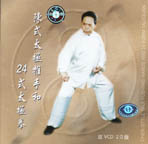 |
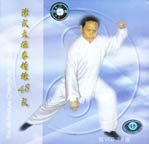 |
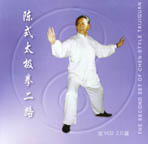 |
|
| Book "Course of Chen Style Xinyi Hunyuan Taijiquan" | Book "Basics of Chen Style Taijiquan" | ||
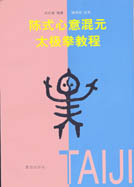 |
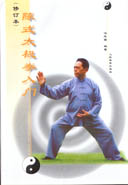 |
||
| End of "Interview with Mr. Feng Zhiqiang, Chen Style Taijiquan expert from Beijing" © J.Szymanski 2000-2003 |
Home ▪ About me ▪ Updates ▪ Taiji ▪ Bagua ▪ Xinyi-Xingyi ▪ Other Styles ▪ News ▪ Store ▪ Community ▪ Email